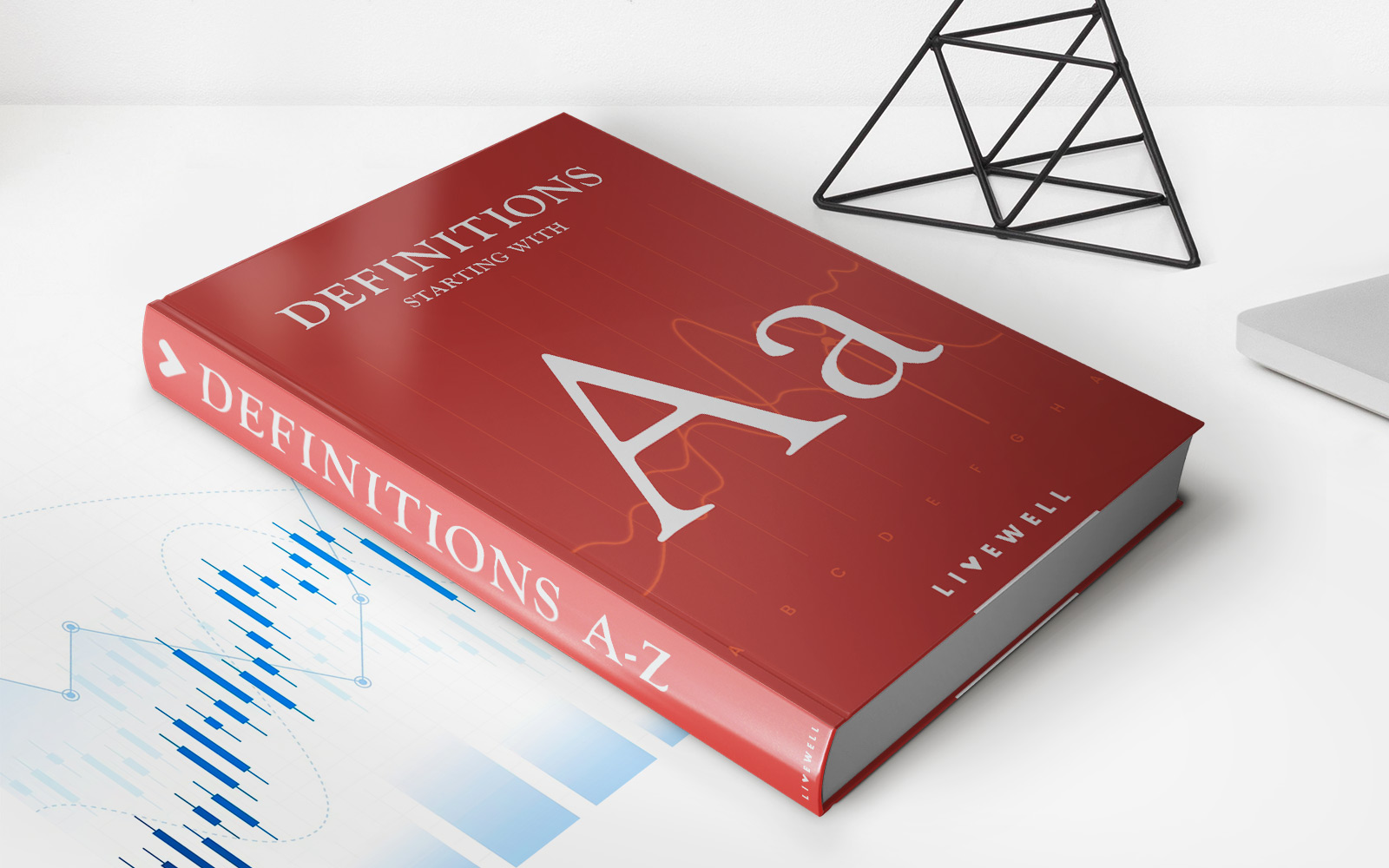

Finance
What Is Non-Installment Credit For?
Published: February 21, 2024
Learn how non-installment credit can benefit your finances. Understand its uses and impact on your financial situation. Gain insights into managing your finances effectively.
(Many of the links in this article redirect to a specific reviewed product. Your purchase of these products through affiliate links helps to generate commission for LiveWell, at no extra cost. Learn more)
Table of Contents
**
Introduction
**
Non-installment credit is a financial tool that plays a significant role in the world of personal and business finance. Unlike installment credit, which involves fixed payments over a specified period, non-installment credit offers more flexibility in repayment terms. Whether it's a revolving line of credit, such as a credit card, or a short-term loan with a single payment due at the end of the term, non-installment credit provides a versatile means of accessing funds when needed.
This form of credit is widely utilized by individuals and businesses to manage cash flow, make essential purchases, and address unexpected expenses. Understanding the nature of non-installment credit, its benefits, drawbacks, and common uses is crucial for making informed financial decisions. By exploring these aspects, individuals can gain insights into how non-installment credit can impact their financial well-being and how to leverage it effectively.
In this article, we will delve into the intricacies of non-installment credit, shedding light on its purpose, advantages, disadvantages, and practical applications. By the end of this exploration, readers will have a comprehensive understanding of non-installment credit and its role in the broader financial landscape.
Understanding Non-Installment Credit
Non-installment credit, also known as revolving credit, is a type of credit that does not have a fixed number of payments. Unlike installment credit, which involves borrowing a specific amount of money and repaying it in regular installments over a predetermined period, non-installment credit allows borrowers to access a line of credit with a set limit and make payments based on the amount borrowed. This form of credit does not have a fixed repayment schedule, and borrowers can use the funds as needed, up to the approved credit limit.
One of the most common examples of non-installment credit is a credit card. When individuals use a credit card to make purchases, they are essentially borrowing money from the card issuer. The outstanding balance on the card represents the amount borrowed, and the cardholder has the flexibility to repay the borrowed amount in full or make minimum payments while carrying a balance from month to month.
Another form of non-installment credit is a short-term loan, such as a payday loan or a title loan, where the borrower is expected to repay the entire borrowed amount, along with fees and interest, by a specified due date. Unlike installment loans, which have fixed monthly payments, non-installment loans are typically repaid in a lump sum, making them a short-term financing option for individuals who need quick access to funds.
Understanding the nature of non-installment credit is essential for individuals and businesses seeking to manage their finances effectively. By grasping the flexibility and repayment dynamics of non-installment credit, borrowers can make informed decisions about when and how to utilize this type of financing to meet their specific needs.
Benefits of Non-Installment Credit
Non-installment credit offers several advantages that make it a valuable financial tool for individuals and businesses. One of the key benefits of non-installment credit is its flexibility in repayment. Unlike installment loans, which require fixed monthly payments, non-installment credit allows borrowers to adjust their repayment amounts based on their current financial situation. This flexibility can be particularly beneficial during periods of fluctuating income or unexpected expenses.
Additionally, non-installment credit provides quick access to funds, making it an ideal option for addressing urgent financial needs. Whether it’s covering an unexpected medical expense, making essential home repairs, or managing cash flow in a business, non-installment credit offers a convenient source of financing without the lengthy approval processes associated with traditional loans.
Another advantage of non-installment credit is the potential for building and improving credit scores. Responsible use of non-installment credit, such as making timely payments and maintaining low credit utilization, can contribute to a positive credit history. This, in turn, can enhance an individual’s creditworthiness and open doors to better financing opportunities in the future.
Furthermore, non-installment credit often comes with rewards and perks, especially in the case of credit cards. Cardholders may enjoy cashback rewards, travel benefits, or loyalty points for their spending, adding an extra layer of value to their financial transactions. These incentives can translate into tangible savings and enhanced purchasing power for individuals and businesses.
Overall, the benefits of non-installment credit, including flexibility in repayment, quick access to funds, credit-building opportunities, and rewards, make it a versatile and valuable tool for managing financial needs and seizing opportunities.
Drawbacks of Non-Installment Credit
While non-installment credit offers flexibility and convenience, it also comes with certain drawbacks that borrowers should consider. One of the primary drawbacks is the potential for high-interest rates and fees associated with non-installment credit products. Credit cards and short-term loans, in particular, can carry relatively high annual percentage rates (APRs) and fees, making them costly financing options, especially when balances are carried over from month to month.
Moreover, the flexibility of non-installment credit can lead to a cycle of debt for some borrowers. Without a fixed repayment schedule, individuals may find it challenging to pay off their balances, leading to a continuous accumulation of interest and potential financial strain. This can have long-term implications for financial well-being, as high levels of debt can impact credit scores and overall financial stability.
Another drawback of non-installment credit is the temptation to overspend. With the ability to make purchases or access funds without immediate repayment obligations, individuals may be inclined to exceed their budget and accumulate more debt than they can comfortably manage. This can lead to financial stress and difficulty in meeting repayment obligations, ultimately impacting creditworthiness and overall financial health.
Furthermore, non-installment credit products, such as credit cards, may have annual fees, late payment penalties, and foreign transaction fees, adding to the overall cost of borrowing. These additional expenses can erode the benefits of non-installment credit, particularly if the cardholder does not fully utilize the associated rewards and perks.
It is essential for borrowers to carefully consider the potential drawbacks of non-installment credit and weigh them against the benefits. Responsible financial management, including budgeting, monitoring spending, and making timely payments, is crucial for mitigating the downsides of non-installment credit and using it effectively as a financial tool.
Common Uses of Non-Installment Credit
Non-installment credit serves a variety of common purposes for individuals and businesses, offering flexibility and convenience in managing financial needs. One of the primary uses of non-installment credit is to cover short-term expenses and cash flow gaps. Whether it’s addressing unexpected medical bills, car repairs, or home maintenance, non-installment credit, such as credit cards or short-term loans, provides a quick source of funding to manage urgent financial obligations.
Additionally, non-installment credit is frequently utilized for everyday purchases and expenses. Credit cards, in particular, offer a convenient means of making transactions without the need for immediate payment. From groceries and fuel to online purchases and entertainment, individuals often rely on non-installment credit to facilitate their day-to-day spending while managing their cash flow more effectively.
Another common use of non-installment credit is for building and improving credit history. Individuals may strategically use credit cards to demonstrate responsible borrowing behavior, such as making timely payments and maintaining low credit utilization. This can contribute to a positive credit history, which is crucial for accessing favorable financing options in the future, such as mortgages, auto loans, and business financing.
Businesses also leverage non-installment credit to manage operational expenses and seize growth opportunities. Business credit cards and lines of credit provide entrepreneurs and enterprises with the flexibility to make necessary purchases, invest in inventory, and navigate fluctuations in revenue without the constraints of fixed loan repayments.
Moreover, non-installment credit can be instrumental in managing seasonal expenses and capitalizing on time-sensitive opportunities. Whether it’s funding a business expansion during peak demand periods or navigating personal financial needs during income fluctuations, non-installment credit offers the agility and accessibility required to adapt to changing circumstances.
Understanding the common uses of non-installment credit empowers individuals and businesses to make informed decisions about when and how to leverage this type of financing to address immediate needs, facilitate everyday transactions, and position themselves for long-term financial success.
Conclusion
Non-installment credit, with its flexibility and accessibility, plays a pivotal role in the financial landscape, offering individuals and businesses a versatile tool for managing cash flow, addressing short-term needs, and building credit. While non-installment credit provides numerous advantages, including quick access to funds, flexibility in repayment, and credit-building opportunities, it also comes with potential drawbacks, such as high-interest rates and the temptation to overspend.
Understanding the dynamics of non-installment credit is essential for making informed financial decisions. Whether it’s utilizing credit cards for everyday transactions, accessing short-term loans for urgent expenses, or leveraging business lines of credit for operational needs, individuals and businesses can benefit from the agility and convenience that non-installment credit offers.
As with any financial tool, responsible management is key to maximizing the benefits of non-installment credit while mitigating its potential downsides. By maintaining a clear understanding of repayment terms, monitoring spending, and making timely payments, borrowers can harness the power of non-installment credit to their advantage.
Ultimately, non-installment credit serves as a valuable resource for navigating the ebb and flow of personal and business finances, providing the flexibility and accessibility needed to address immediate needs, seize opportunities, and lay the groundwork for long-term financial stability.
By recognizing the common uses, benefits, and drawbacks of non-installment credit, individuals and businesses can make informed choices that align with their financial goals and contribute to their overall well-being.














